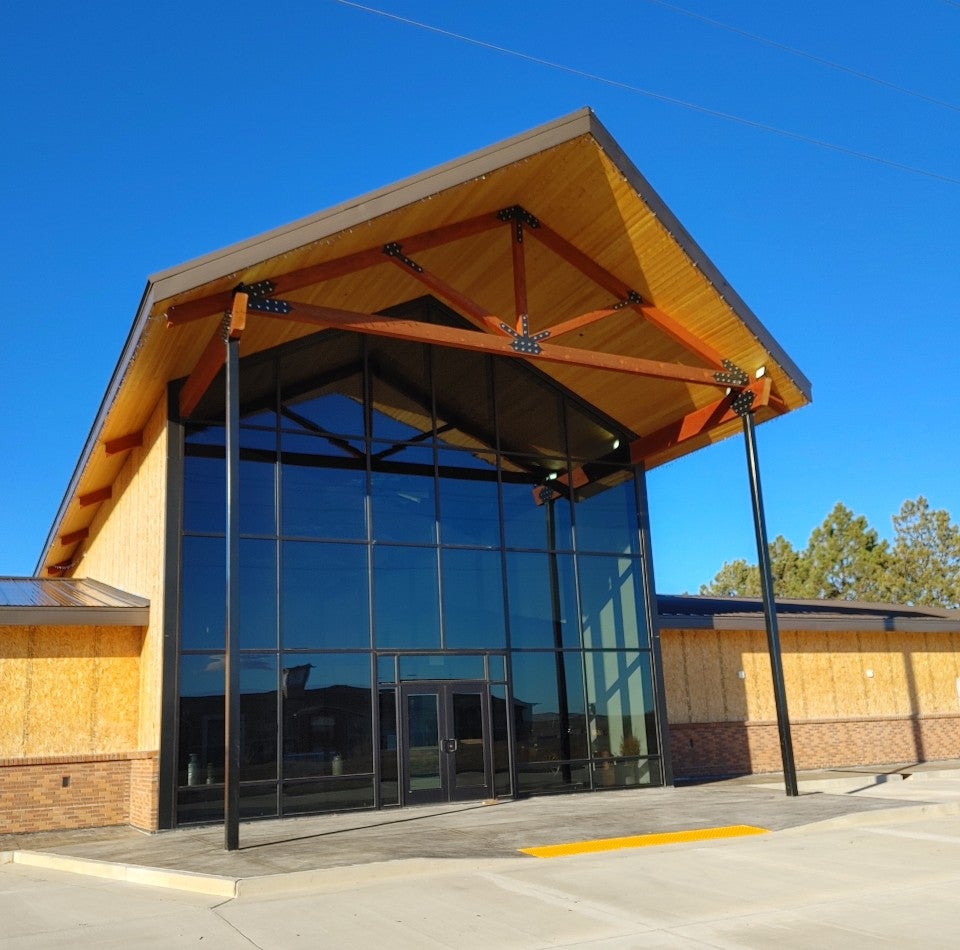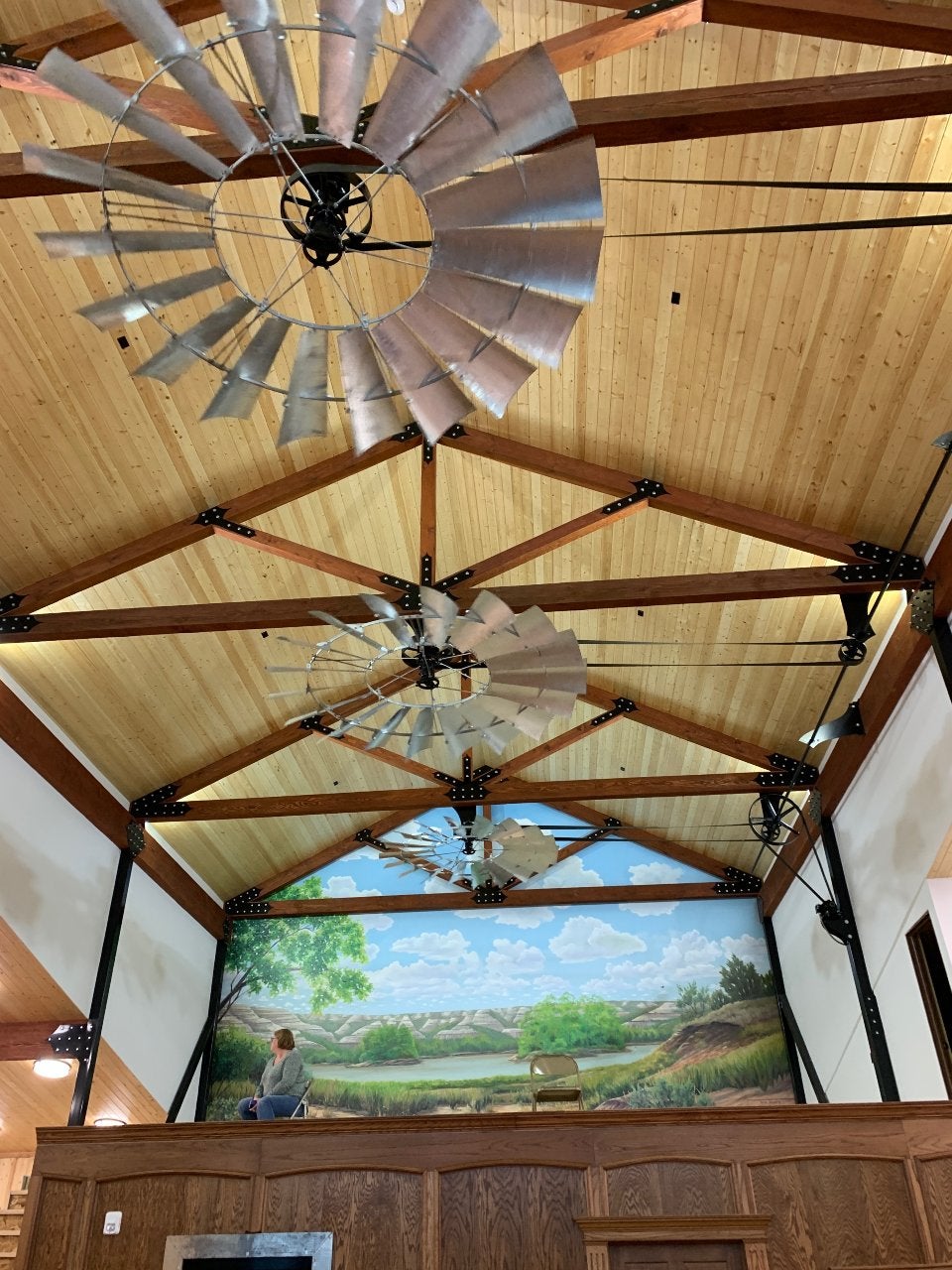McKenzie County Heritage Park - a "peak" behind the scenes
Jessie Veeder Scofield

The pioneering spirit runs strong in McKenzie County, with roots planted in vision and work ethic, struggle, and perseverance. When you step onto the grounds of the McKenzie County Heritage Park in Watford City there are pieces of the past that remind you of how our ancestors endured the harshest winters in a tiny tar-paper shack and the hottest summers behind a horse pulling a plow. Visitors can stand before two rows of small desks in the one-room schoolhouse and imagine themselves as a teacher in the early 1900s. They can stretch their arms out in the tiny log cabin and wonder what raising a family in this space might have been like. During Heritage Days, they can watch an old saw-mill operate, take a ride through the village behind a horse-drawn wagon, or a walk to the old barbershop that used to sit on Main Street and reflect on how much this place has changed through the decades.
And while the Heritage Park exists to honor the past, for over fifteen years the board has kept their eyes on the future—a new building in which to expand their exhibits and welcome visitors.
“We started setting aside what we could,” said LeRoy Lillibridge, president and 27-year member of the McKenzie County Heritage Association. “Of course, we started to realize that we were losing ground because the cost of putting up a building was growing faster than what we could save.”
So the board made a decision. Either do it or forget it. They decided to do it. And it turns out the process—the three years from a pile of dirt to the beautifully designed, two-level, high beamed structure you now see standing, nearly complete, as you enter Watford City on Highway 85—is proof that the pioneering spirit lives on in the people here.
McKenzie County Heritage Park location
From vision to DIY
“I do some architectural drawings, so I drew up my idea and presented it to the board,” said Lillibridge who designed everything from the foundation to the large windows to the columns and beams. He became interested in Structural Insulated Panels, or SIP boards, which are pre-cut panels of foam with a half-inch interior and exterior sheathing that fit together to create a building. After some research, he landed on a company in Western Minnesota who used Lillibridges’ drawings to put together a package for the building.
The original intention was to have the Minnesota company put up the building, but when they came back with an $80,000 plus price tag, Lillibridge wondered why they couldn’t just do it themselves.
So with an excavator and a long boom, LeRoy and a small crew of board members set all of the walls, the roof tunnels on both wings, and the glass wall facing the highway.
“We got a drawing that shows us where every panel goes and every panel has a number and they fit,” said Lillibridge. They hired a crane to set the panels on the roof.
“The people of this community want this building and we want to put their money to good use,” said Lillibridge, who worked to be budget-conscious from the dirt to the drawings, the engineering fees to the hand-stained beams. According to Lillibridge, so far, the building has less than $2 million dollars invested.
“Ninety percent of it was put up on our own,” said Sandy Rieker, Director of the McKenzie County Heritage Association, giving credit to Lillibridge for his hard work and vision. “We all pitched in, helping with boards and staining beams,” she went on, adding that it was Lillibridge who took on the role of general contractor with Tex Stevenson alongside of him putting in the hours.
There are over 1,900 tongue and groove boards lining the lofted ceiling and more serve as baseboards to the 10,000 square foot space. Windmills on line shafts serve as ceiling fans and as you drive by you will catch a glimpse of a beautiful landscape mural of the badlands shining out of the large front windows from the loft space. When it’s all said and done, the flagpoles will stand out front once again, a signature feature of the Heritage Park that will live on.
“The thing that has amazed me about this entire project is the amount of detail that had to be thought through and how he (Lillibridge) was able to break it clear down to the pile of dirt we started with,” said Rieker.
It took three years to go from a pile of dirt to the building that hosted its first events this fall—a community barn dance and, of course, Heritage Day where curious guests were able to walk through the building to get a first glance.
From history to the future
The vision, beyond serving as a welcome center to the Heritage Park, is to visually tell the story of the county’s oil history from the life-sized wooly mammoth to the tools used in today’s oil extraction, which will make the official name of the space to the North Dakota Oil Museum and Heritage Park.
The board has already moved exhibits that have been on display in different buildings at the Heritage Park to the new building as they work to fill the space for its official opening to the public in the late spring of 2022. Rieker anticipates the museum will receive more donations of unique historical items now that there is a secure, climate-controlled building in which they can be displayed.
Besides display space, the building also holds a kitchen, restrooms, an office space, and a conference/media room the public will be able to rent for meetings or parties. Rieker plans to continue to develop youth programming as well as curate a Folk School where guests can take part in learning heritage-based crafts and skills, from lefse making to loom weaving, taking the space beyond exhibits and into demonstration and skill-building, expanding the lessons.
“This is your story. We can display it, exhibit it, and bring it to life,” says Rieker.
And while there are over 100 years between the first homesteaders and the people who exist here today, Rieker feels she has a close connection to those pioneers after leaving her home to live in a camper when she first arrived in Watford City, and it's what drives her passion.
“I found I have so much appreciation for the families that came and settled. They endured, blizzards, the droughts, the dust bowl, two world wars, yet their family is still here,” she laments. “The strength of the people and their allegiance toward their heritage is so fascinating.”
And Lillibridge takes great pride throughout his 27 years serving on the board in creating new ways in which those stories of determination and resourcefulness can live on.
“LeRoy is leaving us an amazing legacy,” said Rieker.
